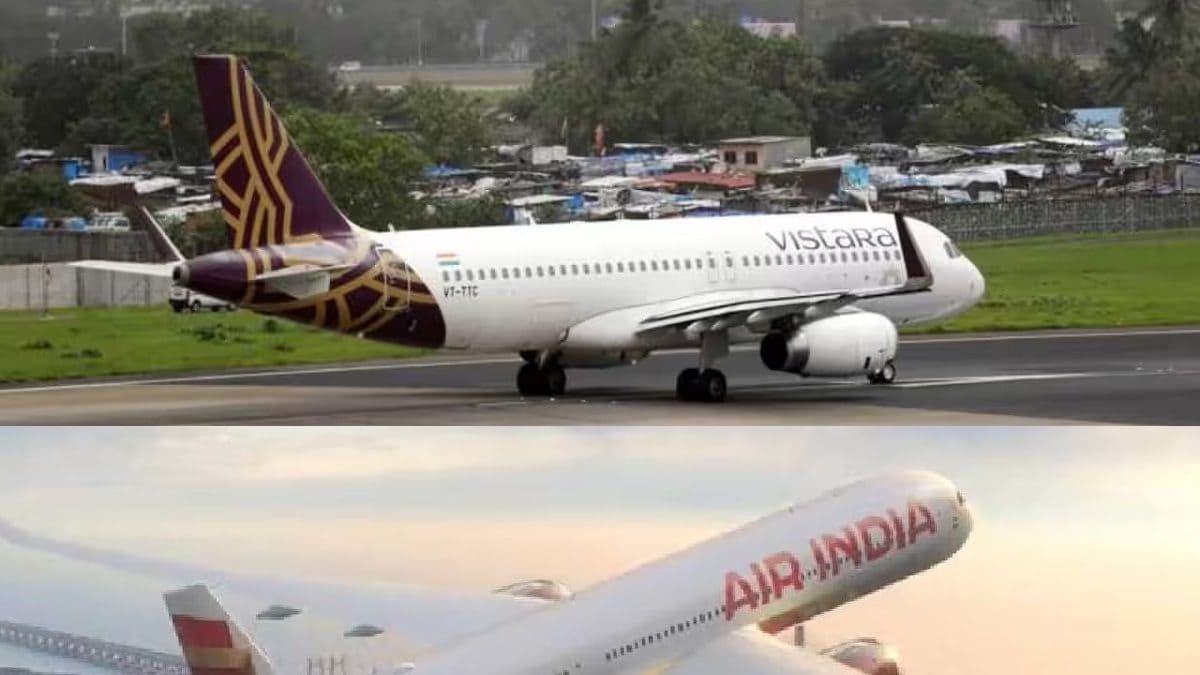The Indian aviation landscape is witnessing a major shift as Vistara, a prominent full-service carrier, prepares to cease its independent operations on November 11, 2024. This decision comes in line with the Tata group’s strategy to unify its airline businesses under the banner of ‘Air India’. This move marks the culmination of the Tata group’s journey to reclaim its legacy in the aviation sector.
Consolidation and Synergies
The merger of Vistara into Air India aims to create a unified airline powerhouse under the Tata group’s leadership. This consolidation will enable the combined entity to leverage its resources effectively, optimize operations, and benefit from economies of scale. With combined strengths in route networks, fleet size, and manpower, the new Air India will have a dominant position in the Indian domestic and international markets.
Benefits of Merger:
- Enhanced Route Network: Air India will benefit from Vistara’s extensive domestic network and access to international routes, expanding its reach to a wider customer base.
- Fleet Optimization: By merging fleets, Air India can streamline its operations and achieve optimal aircraft utilization, reducing costs and improving efficiency.
- Cost Synergies: Combining operations will result in cost savings through shared infrastructure, resources, and administrative functions.
- Competitive Advantage: The combined entity will have greater bargaining power with suppliers, airports, and other industry players, enabling them to negotiate better terms.
A Look Back: The Tata Group’s Aviation Journey
The Tata group’s involvement in India’s aviation industry has spanned over nine decades, marked by a legacy of innovation and growth.
Milestones:
- 1932: The Tata group’s journey began with the establishment of Tata Airlines.
- 1946: Tata Airlines was nationalized, becoming the iconic Air India.
- 2001: The Tata group expressed interest in re-entering the airline sector after a period of absence.
- 2013: The group returned to aviation by launching the full-service carrier, Vistara, in collaboration with Singapore Airlines.
- 2020: The Tata group bid to reclaim ownership of Air India, a defining moment in the group’s history.
- October 2021: The Tata group successfully acquired Air India, marking a significant milestone in its return to aviation dominance.
- January 2022: The Tata group took full ownership of Air India, completing the acquisition process.
- November 2022: The Tata group consolidated its hold in the domestic market by acquiring full ownership of AirAsia India.
- November 2023: The Tata group announced the merger of Vistara with Air India, consolidating its airline ventures.
- August 2024: The Indian government approved Singapore Airlines’ investment of $276 million into the merged entity, paving the way for the integration of Vistara and Air India.
This chronological account highlights the Tata group’s unwavering commitment to reshaping the Indian aviation sector. The group’s journey showcases a consistent dedication to driving growth and innovation in this critical industry.
The Future: A Resurgent Air India
With the imminent merger of Vistara, the Tata group’s ambitions to create a resurgent Air India become even more concrete. The unified entity aims to cater to a broader customer base across domestic and international routes, providing seamless travel experiences and building brand loyalty. The merger provides a platform to revitalize Air India and establish its position as a prominent player in the global aviation industry.
Focus on:
- Enhanced Customer Experience: The new Air India will strive to deliver premium services, catering to diverse passenger needs. This will include improved inflight amenities, expanded lounge facilities, and personalized services.
- Global Expansion: Air India plans to expand its international network by exploring new routes and increasing flight frequencies, providing passengers with enhanced connectivity options.
- Digital Transformation: The airline will focus on leveraging technology to create a user-friendly and seamless experience for passengers, from booking tickets to managing their travel itineraries.
Implications for the Aviation Market
The Vistara-Air India merger has significant implications for the Indian aviation sector. The emergence of a unified Air India with an extensive network, improved fleet efficiency, and enhanced customer offerings is expected to bring heightened competition within the market.
Key Impacts:
- Competition and Pricing: The merged entity will likely influence pricing strategies, potentially leading to greater price competition within the market.
- Growth and Expansion: The combined airline will stimulate further growth and expansion in the aviation sector, creating opportunities for ancillary services, infrastructure development, and job creation.
- Improved Efficiency: The merger will incentivize other players within the industry to optimize their operations and enhance efficiency, raising the bar for service standards.
Takeaway Points
The impending closure of Vistara as an independent entity signals a significant moment in the Indian aviation sector. This merger signifies a strategic move by the Tata group to consolidate its operations and create a strong contender in the global aviation landscape. With a combined fleet, expanded network, and enhanced resources, the new Air India is poised to leverage its strengths to achieve its ambitious goals of growth, expansion, and a revitalized brand image. The merger will bring competition, innovation, and improved efficiency to the Indian aviation market, setting the stage for future growth and prosperity in the years to come.




